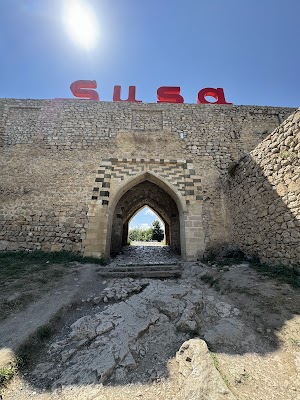Two-Story Caravanserai (İki mərtəbəli karvansara)
Overview
The **Two-Story Caravanserai of Shusha District** in Azerbaijan is an architectural gem that beautifully encapsulates the ingenuity of ancient caravansaries, where trade routes and cultures converged. Constructed in the 18th century, this remarkable building stands as a prime example of Azerbaijani architecture, designed to cater to both travelers and merchants along the historic Silk Road.
The impetus for building the **Two-Story Caravanserai** stemmed from the flourishing trade of the time. As a vital hub, Shusha required a facility that could offer lodging and storage for both goods and weary travelers. The choice to construct a two-story structure was a strategic decision aimed at accommodating a larger number of visitors and merchandise. The upper floor typically provided a resting area for guests, while the ground floor was dedicated to storing goods and stabling animals, ensuring functionality alongside comfort.
Local craftsmanship played a pivotal role in the caravanserai’s construction, with skilled artisans utilizing locally sourced stone and timber. Each stone was meticulously cut and arranged to create sturdy walls, capable of enduring the harsh climate and potential conflicts of the era. The design is not only practical but also visually stunning, featuring elegant arches, spacious courtyards, and intricate stone carvings that showcase the artistry of the time.
The layout of the **Two-Story Caravanserai** was expertly designed for both security and convenience. A central courtyard facilitated easy monitoring of the premises, while separate entrances for guests and animals minimized disturbances. The spacious and well-ventilated rooms provided comfort for weary travelers, with small niches carved into the walls for personal belongings, emphasizing thoughtful design.
Throughout its operational years, the caravanserai transcended its role as merely a resting place; it blossomed into a vibrant center of commerce. Merchants from diverse regions convened here, exchanging goods such as silk, spices, and precious metals. The caravanserai evolved into a melting pot of cultures, where stories and traditions were shared, fostering a sense of community among the varied group of traders and travelers.
The **Two-Story Caravanserai** also significantly contributed to the local economy. It generated employment for many residents of Shusha, including guards, stable hands, cooks, and cleaners. The influx of merchants and visitors stimulated business for local artisans and food suppliers, driving economic growth in the district and enriching the community.
Despite enduring the passage of time and challenges such as wars and natural wear, the **Two-Story Caravanserai** remains a potent symbol of Shusha's historical significance. Ongoing preservation efforts aim to maintain its original grandeur while ensuring structural integrity, vital for safeguarding the cultural heritage and legacy of this historic site.
Today, the **Two-Story Caravanserai** stands as a testament to the rich history of Shusha and the brilliance of its builders. It draws historians, architects, and tourists alike, all eager to marvel at its design and the stories woven into its walls. This caravanserai not only offers a glimpse into the past but also serves as a reminder of the interconnectedness of human experiences throughout history.








